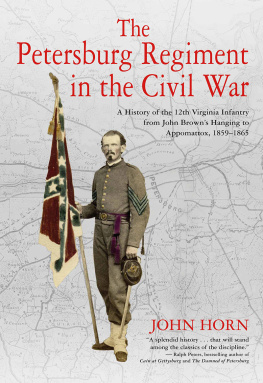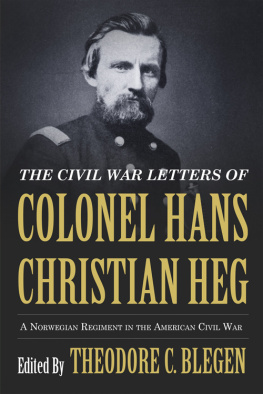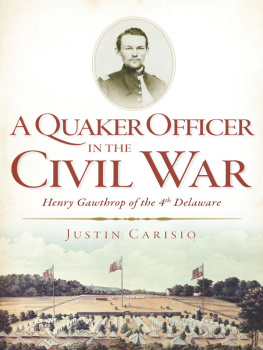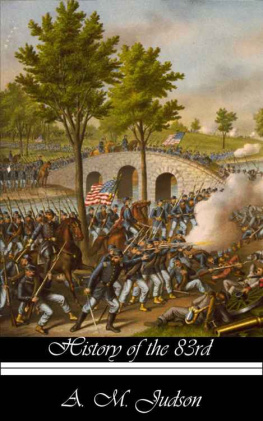2019 by John Horn
All rights reserved. No part of this publication may be reproduced, stored in a retrieval system, or transmitted, in any form or by any means, electronic, mechanical, photocopying, recording, or otherwise, without the prior written permission of the publisher.
Library of Congress Cataloging-in-Publication Data
Names: Horn, John, 1951- author.
Title: The Petersburg Regiment in the Civil War: A History of the 12th Virginia Infantry from John Browns Hanging to Appomattox, 18591865, by John Horn.
Description: California: Savas Beatie, [2018]|Includes bibliographical references and index.
Identifiers: LCCN 2018052408|ISBN 9781611214369
(hbk.: alk. paper) |ISBN 9781611214376 (ebk) |ISBN 9781611214376 (Mobi)
Subjects: LCSH: Confederate States of America. Army. Virginia Infantry Regiment, 12th.
United StatesHistoryCivil War, 18611865Campaigns.
United StatesHistoryCivil War, 18611865Regimental histories
Classification: LCC E581.5 12th .H67 2018|DDC 973.7/455dc23
LC record available at https://lccn.loc.gov/2018052408
First Edition, First Printing
Published by
Savas Beatie LLC
989 Governor Drive, Suite 102
El Dorado Hills, CA 95762
Phone: 916-941-6896
(web) www.savasbeatie.com
(E-mail)
Our titles are available at special discounts for bulk purchases in the United States. Contact the publisher for details.
List of Diagrams and Maps
Diagrams
A Company in Line
The Meherrin Grays in Line at Seven Pines
A Regiment in Line 55
The Petersburg Regiment in Line at Seven Pines
The Petersburg Regiment in Line on May 1, 1863
The Petersburg Regiment in Line in the Wilderness
The Petersburg Regiment in Line at the Crater
The Petersburg Regiment in Line at Burgess Mill
Maps
Battle of Seven Pines, June 1, 1862: The 12th Goes into Action, 8:00 a.m.
Battle of Frenchs Farm, June 25, 1862: 6:30 p.m.
Battle of Fraysers Farm, June 30, 1862: Huger Halts, 4:00 p.m.
Battle of Malvern Hill, July 1, 1862: 5:30 p.m.
Second Battle of Manassas, August 30, 1862: Henry House Hill, 6:30 p.m.
Battle of Cramptons Gap, September 14, 1862: 5:00 p.m.
Battle of Sharpsburg, September 17, 1862: Bloody Lane, 10:00 a.m.
Battle of Fredericksburg, December 13, 1862
Skirmish at the Bullock Farm, April 30, 1863: The Loss of the Norfolk Juniors, 6:30 a.m.
Battle of Chancellorsville, May 1, 1863: The 12ths Initial Advance, 11:30 a.m.
Battle of Chancellorsville, May 1, 1863: The Advance Continues, 11:45 a.m.
Battle of Chancellorsville, May 1, 1863: The Advance Ends, 12:00 p.m.
Battle of Salem Church, May 3, 1863: 5:00 p.m.
Battle of Gettysburg, July 2, 1863: 8:00 p.m.
Second Battle of Brandy Station, August 1, 1863: NoonEvening
Battle of Bristoe Station, October 14, 1863: After the Repulse, 3:45 p.m.
Battle of the Wilderness, May 6, 1864: Longstreets Flank Attack, 11:30 a.m.
Battle of the Wilderness, May 6, 1864: Longstreets Flank Attack, 11:45 a.m.
Battle of the Wilderness, May 6, 1864:
Longstreets Flank Attack, Noon
Battle of Bradshaws Farm, May 8, 1864: 3:30 p.m.
Battle of Spotsylvania, May 12, 1864: Heths Salient, 2:00 p.m.
Battle of Jerusalem Plank Road, June 22, 1864: 3:00 p.m.
Battle of Gurley House, June 23, 1864: Evening 278
Battle of the Crater, July 30, 1864: The Virginia Brigade Charges, 8:45 a.m.
Battle of Globe Tavern, August 19, 1864:
The Confederate Attack
Battle of Globe Tavern, August 19, 1864:
The Federal Counterattack
Second Battle of Reams Station, August 25, 1864:
Final Confederate Attacks, 6:00 p.m.
Battle of Burgess Mill, October 27, 1864:
The Confederate Attack
Battle of Burgess Mill, October 27, 1864:
The Federal Counterattack
Battle of Hatchers Run, February 6, 1865: 5:00 p.m.
Battle of Cumberland Church, April 7, 1865: The First Federal Attack, 1:30 p.m.
Battle of Cumberland Church, April 7, 1865: The Second Federal Attack, 5:30 p.m.
Foreword: A Golden Age of Civil War Studies
A century and a half after the Civil Wars conclusion, scholars and readers find themselves at an unexpected, but very welcome, point: The long tradition of studying and interpreting the conflict has been rejuvenated, resulting in a richer, more honest and far broader appreciation of those who fought in the ranks or led from the front, all but a few of whom had faded into the shadows cast by the titans. More than ever before, we have an appreciation of the complex humanity of the common men who did such uncommon things.
Ours is a golden age of Civil War studies.
Although some enlisted veterans produced admirable memoirs, for over a century the written word focused on the famed men of high rank, first with the score-settling reminiscences by generals gray and blue who bickered among themselves all the way to their graves, then with the shameless romanticizing of the great by partisan historianswho robbed their subjects of their true humanityand on to the popular overview histories in which those below the rank of general rarely earned a mention.
Over the last several decades, though, another strain of historical writing began to have an impact, a democratic approach, in which the average soldiers importance and vitality gained recognition. Hand-written memoirs emerged from chests in attics; letters bound with faded ribbons escaped from old tin boxes; and ever more scholars asked themselves What was it like for the men in the ranks or for the junior officers at war?
Regimental histories, in particular, evolved from bare-bones recitations of events with rosters appended to richly detailed accounts of how flesh-andblood men experienced four years of carnage, heartbreak, loneliness, fury, boredom, hunger, sweat, frostbite, wounds, disease, glory and petty grudges, the thrill and ache of mail from home amid camp lifes sour drudgery, the profound, rough-handed camaraderie and, not least, the experience of battle.
John Horns splendid history of the 12th Virginia will stand among the classics of the discipline.













